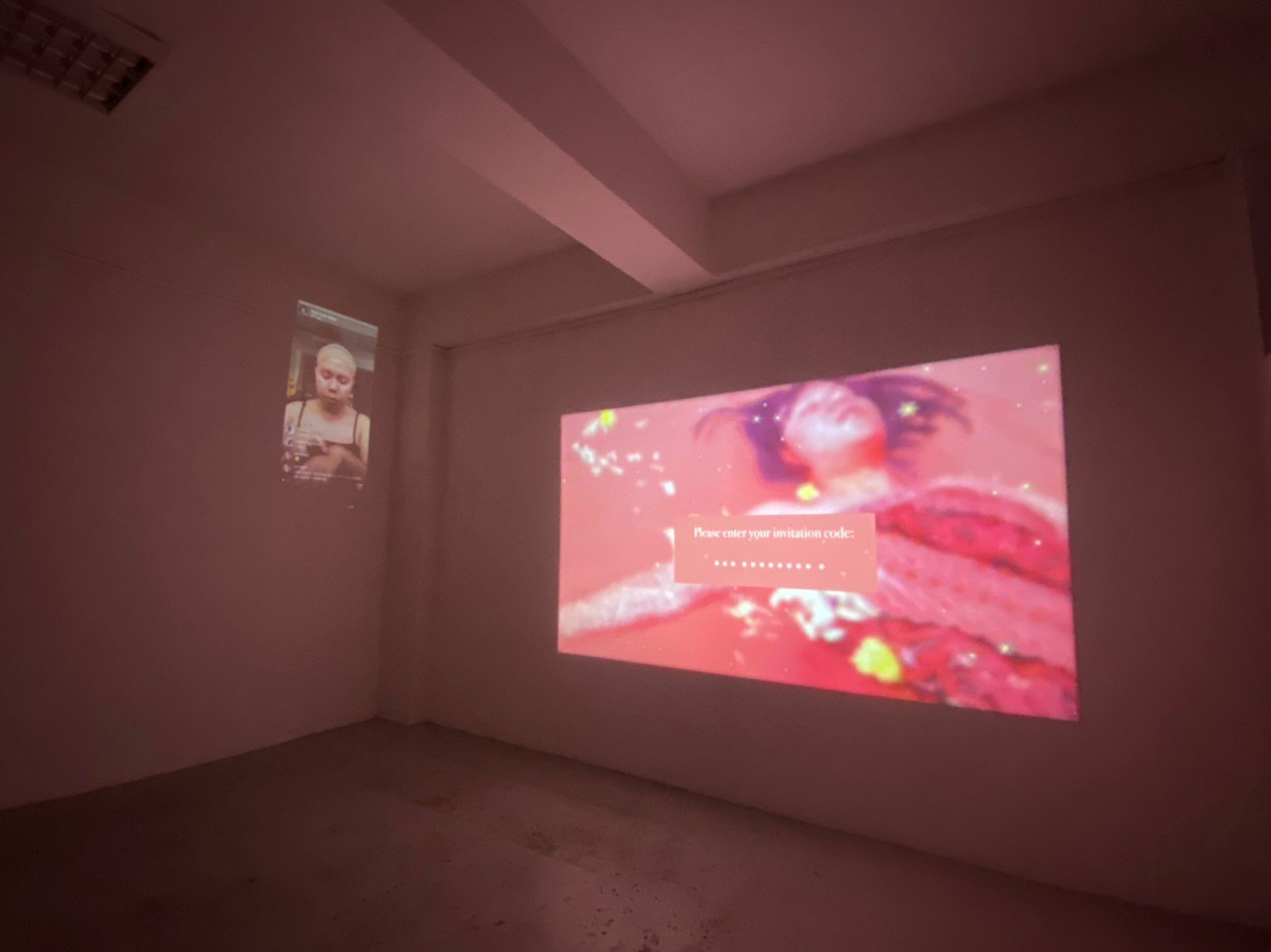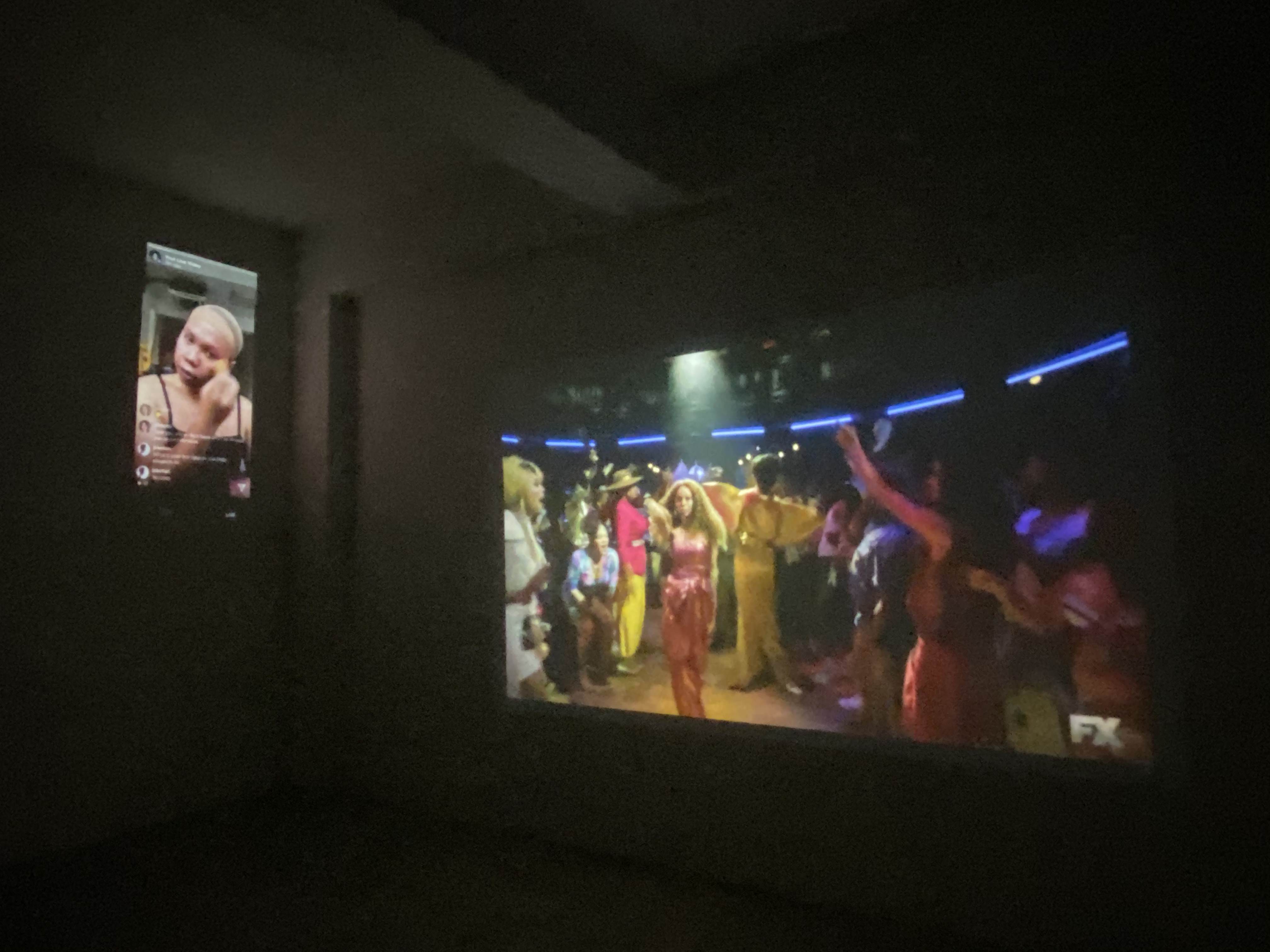It’s not always about the final work of art, but relishing in the process of making. This perspective of decentering buoyed to the surface time and time again in this interview with Wong Bing Hao — although this is not to say that they think of the work of art as inconsequential or unimportant. In this conversation, Bing Hao touches on the informal conversations, mutual exchanges and methodical detours that comprise their practice. A recent collaboration with the artist nor was presented at Peninsular in 2019, and a series of texts from the session were recently published as a booklet.
Wong Bing Hao is a writer, editor of publications, mediator, and cultural worker. Their practice is concerned with research-forward collaborations with artists and cultural practitioners to develop vocabularies, visual manifestations, and conversations that gesture toward representational accountability and ethical, expansive practice. They write for a range of publications including Artforum, Frieze, Leap, Textwork and Southeast of Now. Their series of online publications (Indifferent Idols 2018, nominal bliss 2019, and forthcoming 2020/21) aims to generate new research networks around contemporary artists of non-binary and trans experience. They received a BA in History of Art from University College London and an MA in Southeast Asian Studies from the National University of Singapore, where they wrote dissertations on transgender and queer diasporas in contemporary art respectively.
Wong Bing Hao is a writer, editor of publications, mediator, and cultural worker. Their practice is concerned with research-forward collaborations with artists and cultural practitioners to develop vocabularies, visual manifestations, and conversations that gesture toward representational accountability and ethical, expansive practice. They write for a range of publications including Artforum, Frieze, Leap, Textwork and Southeast of Now. Their series of online publications (Indifferent Idols 2018, nominal bliss 2019, and forthcoming 2020/21) aims to generate new research networks around contemporary artists of non-binary and trans experience. They received a BA in History of Art from University College London and an MA in Southeast Asian Studies from the National University of Singapore, where they wrote dissertations on transgender and queer diasporas in contemporary art respectively.
¹ Session #8: nor + Wong Bing Hao
2019, Installation View at Peninsular
2019, Installation View at Peninsular

DECENTERING ARTISTIC RELATIONSHIPS THROUGH TEXTUAL COQUETRY
Wong Bing Hao (WBH): I generally don’t feel comfortable speaking on behalf of an artist, or ‘introducing’ the artist to others as a curiosity or discovery. I steer clear of marketable descriptions of categorical affiliation which more often than not offer paltry and reductive interpretations of an artist’s work. Please allow me to try another approach instead: one that describes what my practice hopes to do with and for artists. As a cultural worker, more specifically one who privileges writing and editing as modes of engagement, I see it as my responsibility to engage artists and other cultural practitioners in some form of critical or vibrant dialogue. Talking, joking, or simply ‘hanging out’, as many an artist and thinker from the region might attest, are key to coalescing a long-term commitment to artistic practices and their contradictions and untidiness. From this foundation, we can then operate to serve, rather than instrumentalise, artists’ intentions, idiosyncrasies, sensitivities, and aspirations.
In my practice, I try to describe what I’ve learned from artists and their work. This humbling and concise observation comes from a talk by May Adadol Ingawanij. This is my little contribution to an artist’s lifeworld. With this verbose disclaimer in mind, I’d like to describe the process of how nor started working on Wedding 2020, which in its extant form comprises nine short fictional prose texts in which the artist sketches out coy imaginations about her prospective wedding and amorous relations. That the artist engages with this ‘universal’ experience on very particular and personal terms should not be slighted.
I first spoke to nor in June 2018 at her solo exhibition of photography, text, and installation, In Love, which was held at Coda Culture’s previous space in Lavender. A year later, having been in conversation, I approached nor about the possibility of working on a collaborative project at Peninsular, an artist-run space and studio operated by Cheong Kah Kit and Guo-Liang Tan which for the past four years has been committed to nurturing open-ended collaborations between artists and cultural practitioners. Peninsular, or more specifically the iteration that we have become familiar with, has recently ceased operations at its current location. The initial outcomes of our collaboration and conversation at Peninsular were two-fold: nor’s experimental 2-channel video work titled Good girls go to heaven, Pretty girls go online (2019), which we presented at Peninsular in November 2019, and nominal bliss, the second in a series of free online publications I’ve been editing around artists of non-binary and trans experience. nor’s practice was the point of departure for this publication. In response to one of her poems, Woman Part 1, I commissioned Ferdi Thajib, an anthropologist and cultural researcher, and Bermet Borubaeva, a curator and environmental researcher, whose texts I feel are sound companions for nor’s poetry. nominal bliss speculates on the transness of transness (transcultural, transnational, translation, transgender, transdisciplinary etc.), and how it can be applied as a methodology to approach a region.
A booklet culminates each project at Peninsular. Rather than simply documenting the work or interviewing nor, I thought this would be an opportune moment for nor to publish her writing, as it is an important facet of her practice. I edited the texts with nor’s input. This is the long-winded way of describing how Wedding 2020 came to be. As an artist trained in photography, primarily using self-portraits as a form of representation, nor has since experimented with video and different styles of writing to explore how else she can represent herself and her political and ethical commitments. We continue to talk about how Wedding 2020 might look like in the future.
I hope it has become apparent that I enjoy the working process with an artist, and do not necessarily valourise a finalistic product, genealogy, or identity. That is not to say that I discount the work of art and its political connotations — far from it. The work becomes an incubator of lived experiences and vacillations, not a singular, atomistic, unfeeling entity. An engagement with the work itself is therefore of paramount importance: What does it look like? Who makes the work, and who receives it? How does the work communicate with us? Why does this work need to be made at this present moment in time? How, if at all, can I intervene in and enrich the journey through which the work comes to exist? My practice indulges in artwork-forward exegesis that then tells us something of the artist’s lifeworld. Situations and people change, and the work of cultural practitioners, I think, is to adapt, respond to, and convey these peculiarities and vicissitudes with the appropriate methods. I am committed to continuing this collaborative and extensive work.
² Session #8: nor + Wong Bing Hao
2019, Installation View at Peninsular
2019, Installation View at Peninsular

THE MUTUALITY OF COLLABORATION AND CO-IMAGINATION
WBH: All of us function in an artistic ecology in concert with one another. Whether we like it or not, our roles are contingent and interdependent in some way. This is a matter of practice rather than pontification or metaphor. Negotiation and conversation are sometimes difficult, but always important to convey and assert our boundaries and ethics. I hope I will be able to see more diversity and accountability at all levels of the art world.
Like-minded individuals will find one another, more often than not through introduction. That’s how I came upon nor’s work. She also involves other artists in the making of her work, and similarly participates in other artists’ work. In other words, I think nor’s practice extends into the everydayness of social life, and has to be understood in relation to people and community. It is also deeply significant that artists like nor are engaging with artistic production, reception, and legacy on particular and non-neutral terms, for instance, ethnicity, class, gender, and sexuality, that demand an equally specific and intensive address that goes beyond the politics of superficial or thematic inclusion. Curatorial energies should be redirected to these critical questions instead of fleeting, topical, and cursory engagements that serve to placate only ‘curator’ and audience, to the unfortunate detriment of artistic integrity and development. Can or should one work or one person be emblematic of an entire discourse or identity? Who, where, and why have certain emblems and paragons been forgotten or elided from history’s books? Are the current evaluation standards and validating mechanisms neutral? Does representation equate to socio-political enfranchisement? How can work made by artists like nor be privileged and engaged with for its visual quality? Who else is behind the materialization of this work? Where does this community begin and end? What are the implications of such geographical, political, or social delineations? What are potential inequalities and sensitivities in this interaction? No one person can answer or resolve these questions, but I am invested in learning from people who might not have had a prior voice in this conversation, and extending an overture to them to participate in and pluralize these discussions about scholarship, practice, and reform. I hope that we can begin to take seriously these social issues as viable methodologies to approach and evaluate art.
MEDIATION AND CONVERSATION AS CRITICAL PRACTICE
WBH: You asked me what it means to work as a mediator in Singapore, where “there is thought to be a certain level of rigidity and/or hierarchy associated with cultural production and consumption”. This is a really broad question which would perhaps benefit from some context in order to avoid a generic or totalizing response. Where, how, and in what capacity does one work? The varying answers to these questions will significantly change the factors in this equation. Speaking from my own limited experiences, I believe working through different scenarios and contingencies, and holding strong to your ideals while addressing operational realities, is difficult but imperative.
I identify with the practice of mediation because it offers possibilities to dissolve what you call “rigidity” in “cultural production and consumption.” Maria Lind thinks of mediation as a “transfer”, a “pragmatic transmission of a message.” Implicit in this statement is the social: a message is relayed between people (collaborators, producers, publics, spectators, kin, strangers, etc.), alluding to the possibility and indeed importance of disagreement and debate, without emphasizing the necessity of a resolution. Mediation therefore requires work to sustain open-ended (and sometimes difficult) conversations between people. This recalls Chantal Mouffe’s theorization of agonism, as opposed to antagonism, which remains an important grounding principle in my practice. Rather than prioritize a certain fixed output or outcome, mediation might be a more sustainable and meaningful way out.
Mediation creates what Lind calls “contact surfaces” that allow for a “wider variety of [...] exchanges” in relation to art. In a similar way, I like to engage with different audiences, collaborators, and ideas to imagine differently the scope, audience, and future of art.
